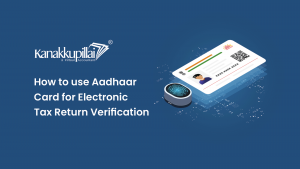![]()
Apply for an Aadhaar Card Online
The Aadhar card, a 12-digit unique identification number issued by the Unique Identification Authority of India (UIDAI), has revolutionized how identity is verified and utilized across India. This versatile document has unified identification across various platforms and services, serving as a foundation for government and private sector interactions. This article explores the significance of the Aadhar card, its eligibility criteria, required documents, and the step-by-step process to apply for it online.
Aadhar Card Overview
The Aadhar card, introduced by UIDAI, has transformed the identification landscape in India. Its 12-digit unique identification number has become a cornerstone for numerous government and private services, simplifying identity verification and reducing the chances of identity fraud.
In a diverse and populous country like India, the Aadhar card is a unifying thread connecting individuals to government welfare programs, financial services, and administrative processes. It contains vital personal information, including an individual’s name, photograph, biometric data (fingerprints and iris scan), date of birth, and address, ensuring accurate identification and reducing errors in various systems.
Aadhaar Card Eligibility
One of the remarkable aspects of the Aadhar card is its inclusive eligibility criteria. Regardless of age or gender, any resident of India can apply for an Aadhar card. This inclusivity ensures that every individual, from infants to the elderly, has access to a universally accepted identification document.
Documents Required for an Aadhaar Card
The UIDAI mandates specific document submissions during the Aadhar card application process to establish an individual’s identity and address. These documents are vital for verifying the accuracy and legitimacy of the provided information. Acceptable documents include proof of identity (e.g., Passport, PAN card, voter ID) and proof of address (e.g., utility bills, bank statements).
How to Apply for an Aadhar Card Online?
Applying for an Aadhar card online has made it accessible and convenient for individuals across India. Here’s a step-by-step breakdown:
- Visit the Official UIDAI Website: Visit the official UIDAI website (https://uidai.gov.in/) and look for the ‘Aadhar Online Services’ section to initiate your application.
- Fill in the Aadhar Card Application Form: Provide accurate personal details such as your name, date of birth, gender, and mobile number in the application form.
- Upload Documents: Scan and upload the necessary documents to verify your identity and address, ensuring the accuracy and legitimacy of the information provided.
- Book an Appointment: After submitting the form and documents, you can book an appointment at your nearest Aadhar Enrollment Center.
- Visit the Aadhar Enrollment Center: On the appointed date and time, visit the selected Aadhar Enrollment Center, where your biometric information (fingerprints and iris scan) will be collected for verification.
- Collect Your Aadhar Acknowledgment Slip: After collecting your biometric data, you will receive an acknowledgement slip containing an enrollment number, essential for tracking your Aadhar card’s status.
How to Check Aadhaar Status?
Tracking your Aadhar card’s status is a straightforward process that can be done online:
- Visit the UIDAI Website: Go to the UIDAI’s official website and navigate to the ‘Check Aadhaar Status’ section.
- Enter Enrollment Details: Input your enrollment number, date, and time as mentioned in the acknowledgement slip.
- Security Code Verification: Enter the displayed security code for verification purposes.
- Check Status: Click on the ‘Check Status’ button, and the system will provide real-time information about your Aadhar card status.
Importance of Aadhaar Card
The Aadhar card holds immense importance in various aspects of an individual’s life:
- Simplified Identification: It eliminates the need to carry multiple forms of ID, serving as a comprehensive identification document.
- Welfare Programs: Government schemes are efficiently linked to Aadhar, ensuring the targeted distribution of benefits to eligible recipients.
- Financial Inclusion: It facilitates financial services, allowing individuals to open bank accounts and access various financial services easily.
- Digital India Initiatives: Aadhar is a cornerstone of the Digital India campaign, promoting online transactions, e-governance, and paperless processes.
- Reduced Red Tape: Bureaucratic hurdles are minimized with Aadhar-linked verification, leading to faster and more efficient service delivery.
Conclusion
Applying for an Aadhar card online represents a significant step towards streamlining identification and verification processes for Indian citizens. UIDAI’s commitment to inclusivity ensures that every resident possesses a unique identification document that opens doors to many services and benefits. The Aadhar card’s role as a unifying force in India’s complex administrative landscape cannot be overstated. Embrace the convenience of online applications and experience the power of Aadhar in simplifying your interactions with various institutions and systems.





